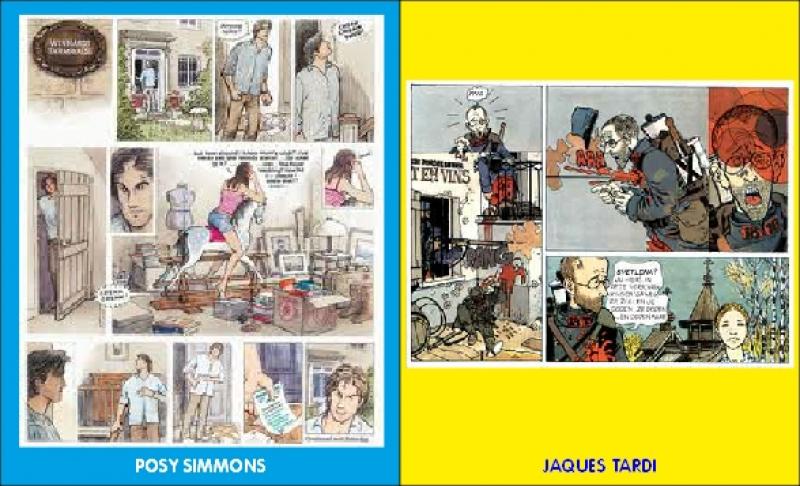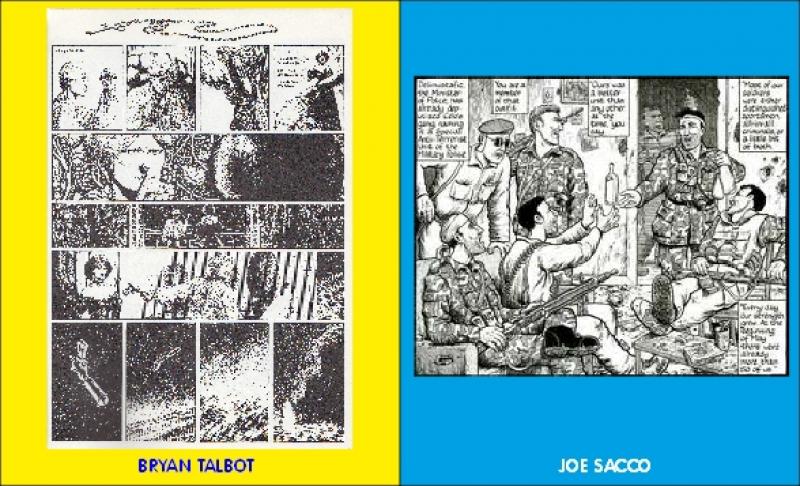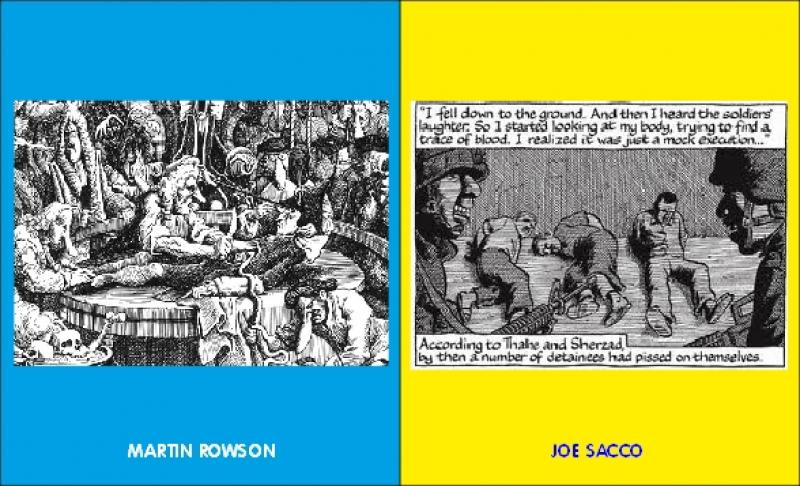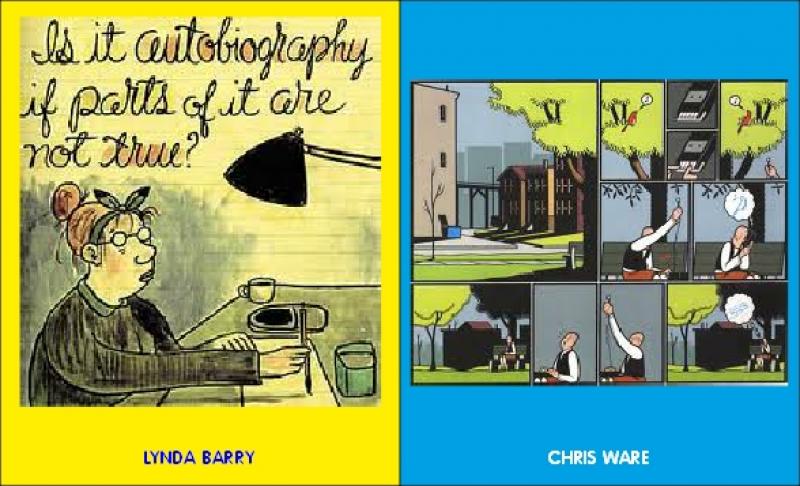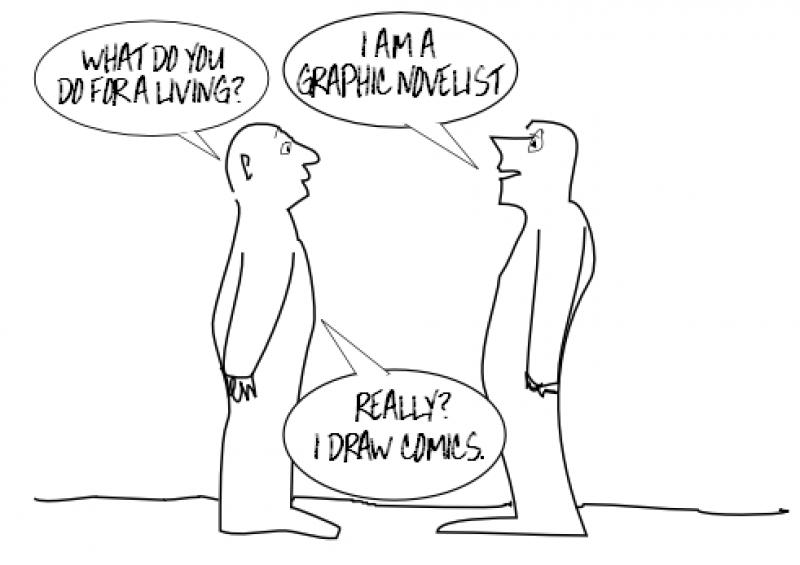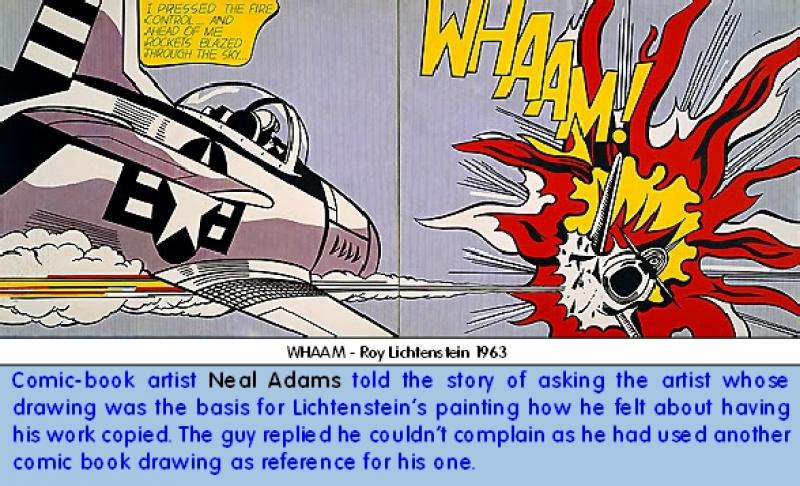The Guardian on Thursday July 14th in it’s g2 section ran an article ‘The artist’s artist. Graphic novelists. Six leading graphic novelists choose their favourite peer.’ and I have been worrying about it ever since.
The artists and their choices are :-
Peter Kuper elected Robert Crumb as his favourite graphic novelist, Bryan Talbot chose Joe Sacco, Posy Simmons chose Jaques Tardi, Ariel Schrag chose Gabrielle Bell, Martin Rowson chose Joe Sacco and Lynda Barry chose Chris Ware.
Good for them. The newspaper for featuring comic-strip art, the selectors for having the opportunity and the selected for the praise they get.
Searching for the source of my uneasiness with this article I came up with this. There is a category mistake in the piece. Graphic novel is a subset of Comic-strip and here the two are confused and the distinction is not made.
As far as my knowledge and research can tell only Posy Simmons and Bryan Talbot have created what I would regard as graphic novels. Only Posy Simmons selected an artist who creates what I would regard as graphic novels. Other selectors and selected are more makers of humour, social observation and reportage - distinctions that would be made for any other form of literature. ‘Novel’ is a designation usually reserved for a certain kind of book. (Novel - long story: a fictional prose work with a relatively long and often complex plot, usually divided into chapters, in which the story traditionally develops through the thoughts and actions of its characters (Encarta ® World English Dictionary) Here ‘novel’ is used with ‘graphic’ as a substitute for ‘comic-strip‘, which it is not. The feature appears in the ( highly literate and literature conscious) Guardian and those of a low suspicious nature might think ‘graphic novel’ is a classification used for a readership that would translate ‘graphic’ and ‘novel’ as art and literature and regard ‘comic-strips’ as lowbrow diversion.
Which is also a source of my disquiet with the Guardian feature.
The term ‘graphic novel’ came to the fore when publishers were trying to distance their products from the low esteem of ‘comic-strips‘. Not a problem in France where they have ‘bande dessinée’ ( and have bestowed on it the description ‘La Neuvième Art‘, the Ninth Art ), or in Japan who have the widely read and respected Manga. For English speakers Will Eisner tried to popularise the term ‘Sequential Art’ but with little success. Comic-strips have some acknowledgment in our culture but largely bastardised - classic literature re-represented, films made, themes and graphic styles pirated - with the real stuff too often kept at a distance. Take Roy Lichtenstein.(see davidbarsalou.homestead.com/LICHTENSTEINPROJECT.html ) His 1963 painting WHAAAM was a comic book drawing presented in fine art form. The painting drew attention to comic-book art but as isolated object, the joy to be had from the original in it’s context ignored. The cultural standard setters have disregarded the originality, creativity, skill, drama and aesthetics of real mainstream comics whose inventors have introduced characters, narrative devices and concepts that hadn’t crossed the mind of the practitioners of other art forms. There are thought-provoking, telling, comic books I enjoy as much as the next intellectual but one of the best ‘graphic novels’ I have come across was a mass super-hero saga. There are too all the comic-book SF, fantasy, adventure and funnies to which my reading time has been devoted. The traditional Seven Arts - painting, poetry, sculpture, dance, music, architecture and theatre, with film and TV the more recent eighth addition - are recognised in all their distinctiveness, variety and on their own terms as forms that are great despite all the turkeys. Comic-strips are a great form and deserve the same treatment.
Since posting this piece I find The Guardian have gone a good way in redeeming themselves with the contents of the Superhero issue of their July 23rd 'Guide' . It includes Steve Rose’s ‘estate agent’s’ take on superhero’s secret lairs - mention of 4CP.posterous.com where fragments of vintage comics are shown enlarged to reveal their coloured dot print method - Grant Morrison trailing his new book Supergods: Our World In The Age Of The Superhero with ten of his favourite super-hero comics - a review of the 'Captain America' movie - Stuart Heritage’s six superheros unlikely to be made into movies - and a fact-check page on Stan Lee.

